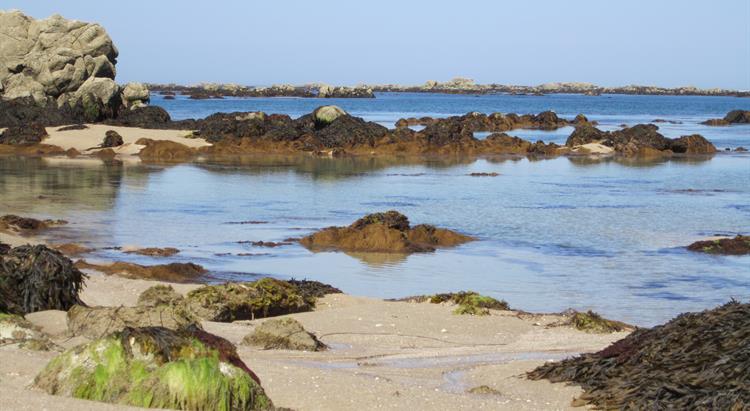27 September 2017

Jersey’s offshore reefs, internationally recognised for their importance to wildlife, are now protected from disturbance by dredging and trawling, following unanimous States support today.
The Minister for the Environment proposed the ban to protect two large marine areas, totalling 62 km2, of important and sensitive habitats in the shallow seabeds around Les Minquiers and Les Écréhous. The decision required complex negotiations and agreement with the French authorities under the Granville Bay agreement and took nearly five years to achieve.
Les Écréhous and Minquiers are home to extensive areas of seagrass, maerl and kelp. These are important nursery grounds for fish and shellfish, including many commercial species, so the protection will benefit the local marine environment and the fishing industries by increasing the stock of marine life in local waters.
The Minister for the Environment, Deputy Steve Luce said ‘This is a significant decision and a crucial step forward in protecting our precious marine environment. It’s come about thanks to the hard work and tenaciousness of people in public and non-governmental bodies, who have worked together for Jersey.
‘Our offshore reefs are rightly regarded as environmental treasures and the ban on dredging and trawling will provide a measure of protection needed to safeguard the ecological and economic welfare of our seas.’
The project involved a number of organisations working together, including the Marine Resources team at the Department of the Environment, the Jersey Fishermen’s Association, the Société Jersiaise, Jersey Seasearch and French fishing organisations and authorities.
The ban on dredgers and trawlers around the Écréhous and Minquiers brings the total area of seabed protected from the use of what’s known as ‘mobile fishing gear’ to 150 km2. or 6.5 per cent of the Island’s territorial waters. There is now a continuous area of protected seabed running clockwise from Grosnez to Noirmont.
Offshore reefs information
- Jersey has several offshore reefs. The largest and most significant are Les Écréhous, five miles north east of Rozel, and Les Minquiers, ten miles south of St Helier. Together they form an area that is four times larger than Jersey and, following a 1953 ruling by the International Court, extend Jersey’s territorial waters by around 1,000 km2.
- Both Les Écréhous and Minquiers are in the Island’s territorial waters, but they’re actually outside Jersey’s exclusive three-mile fishing zone so commercial fishing on them is managed via a treaty between Jersey and France, known as the Bay of Granville Agreement. It means any change to fishing practices at the reefs requires the approval of the Jersey and French authorities and, for pragmatic and political reasons, it took nearly five years for Jersey to get agreement for the new protected areas.
- Les Minquiers and Écréhous are designated wetlands of international importance under Ramsar Convention and are also part of Jersey’s Coastal Park.
- Research and mapping work by the Department of the Environment’s marine Resources team, Société Jersiaise and Jersey Seasearch has enormously expanded our knowledge of Jersey’s offshore reefs and the wildlife they contain, and revealed a diverse, complex and fragile range of habitats.
- More than 60 different seabed habitats and 750 species have been recorded during this work, including nationally rare animals, such as the Sunset Cup-coral and Pink Sea Fan, and many species that not previously recorded from Jersey waters.
- Les Écréhous and Minquiers are home to extensive areas of seagrass, maerl and kelp. Seagrass meadows may contain up to 360 different species and maerl beds maerl beds may contain over 200 species and both are so important they are on most European lists of threatened marine habitats.
- ‘Mobile gear’ refers to trawls and dredges that are towed behind a moving fishing vessel. Mobile fishing gear is heavy and when towed along the seabed it can damage sensitive seabed habitats. Its use will now be restricted in an area of 15 km2 around Les Écréhous and 47 km2 around Les Minquiers. The new zones will still allow the use of static fishing gear such as lobster pots and fishing lines, and activities such as diving and boating are unaffected.